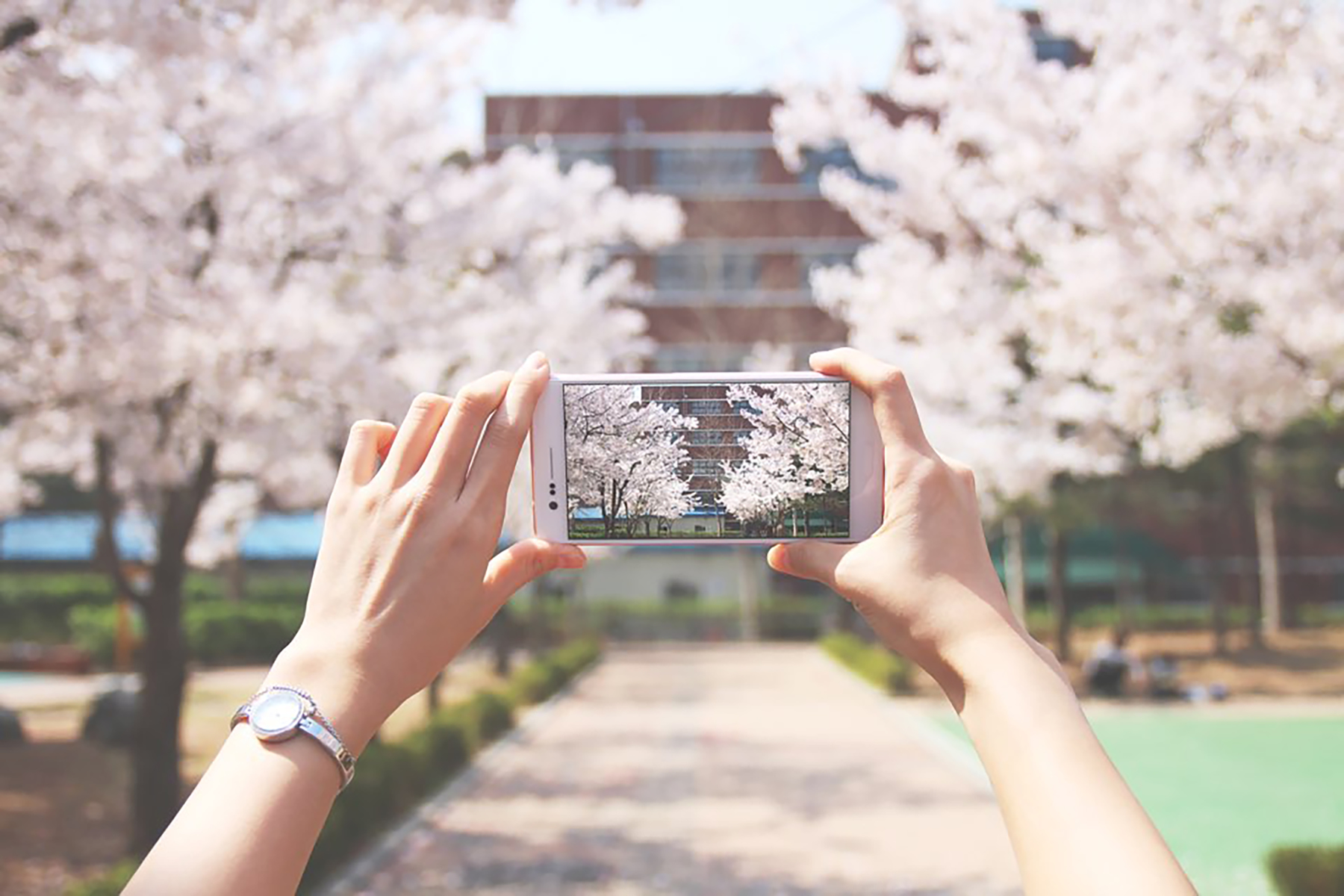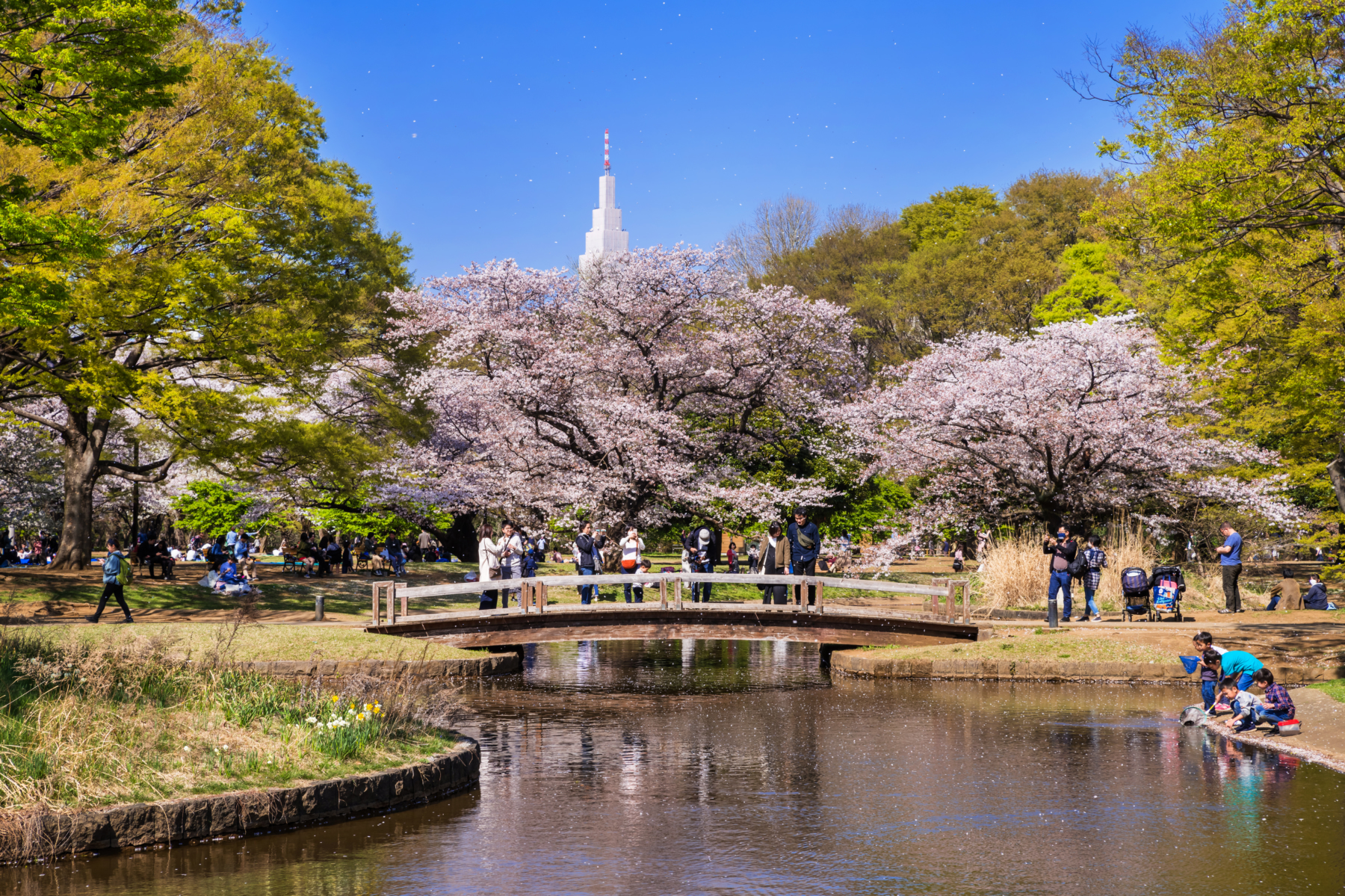Hanami season is back in full swing. Here our TW’s top places to admire and picnic under beautiful cherry blossom, all round Tokyo.
This is the the season when commuters and students head to work and school with an extra spring in their step, hearts filled with joy at the sight of cherry blossom streets lining the streets. Temples and shrines, too, are framed delicately with tinges of pink, contrasting their earthy tones.
Organized events and matsuris in designated parks and grounds take place, drawing in millions of visitors all over the city each year. Here is Tokyo Weekender’s roundup of spots where you can soak up some sakura-based inspiration and catch a fleeting glimpse of nature at one of its most alluring moments.
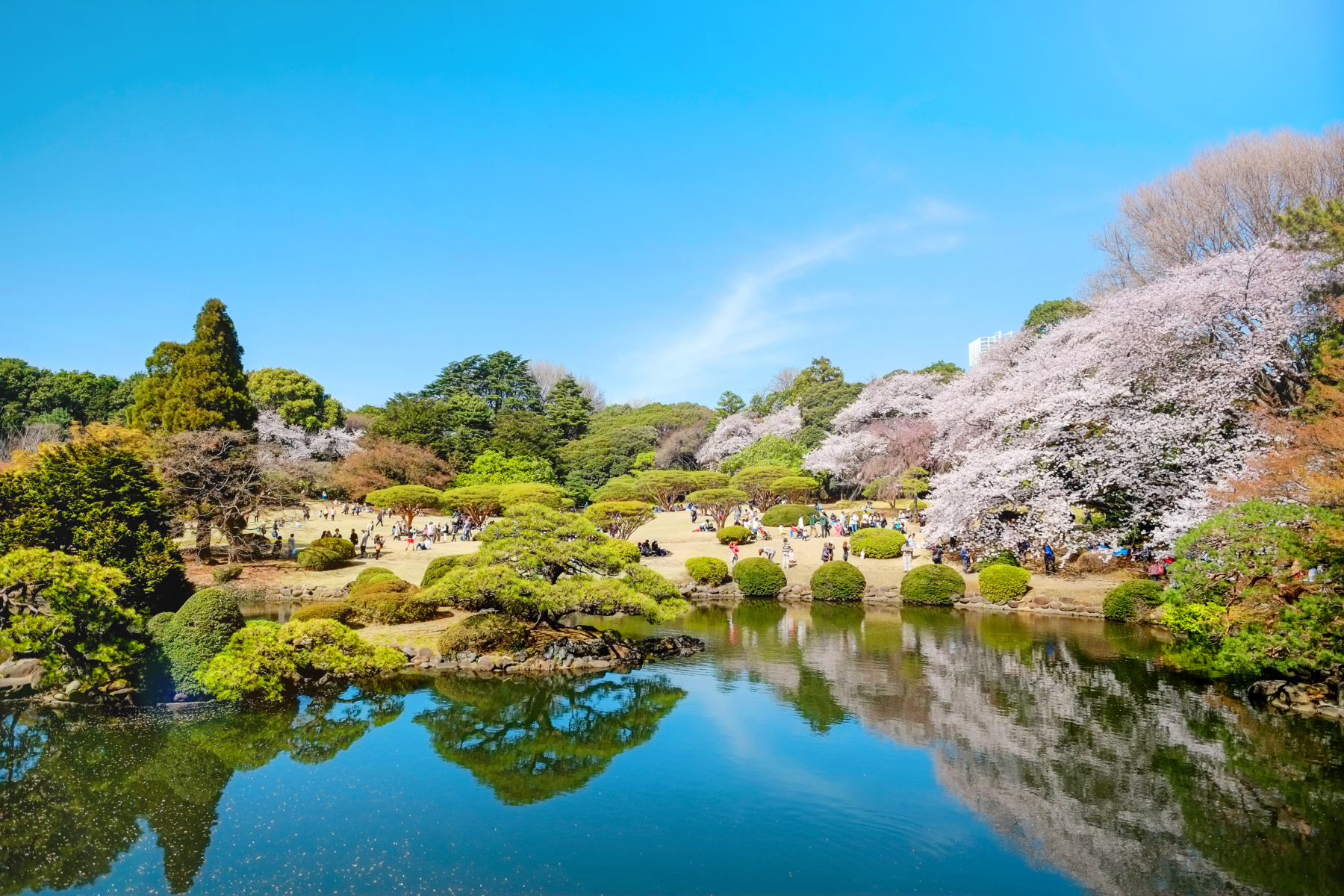
Shinjuku Gyoen
Perhaps one of the first places people where Tokyoites go to see cherry blossoms is Shinjuku Gyoen, which was originally a private, imperial garden established by Lord Naito over a hundred years ago. It’s one of the largest, with almost 140 acres to boot, four specific garden areas, and a greenhouse. Near the Sendagaya entrance you’ll find the main cherry blossom tree hill, and throngs of small pavilions to rest in and gaze out across the park. It’s certainly one of the more formal parks in the area, with its well-kept appearance, tidy ponds, and neatly knit-together flower fields. Be wary of park regulations (that is, no alcohol allowed, entrance fee of ¥500 per person), especially for picnics and true hanami (“flower viewing” by translation, but really referring to the parties that enhance the event) spirit, and mindful of park hours, but be sure to include it on your list of places to check out while you’re plotting your park-hopping course. The accessibility is easier than most other parks, at about five minutes from Shinjuku Station (heading left from the South Exit, following the road down past Wald Cinema, and veering to the right), there’s no excuse not to miss it.
For more information or to scope out the park in advance, check out the park site here: http://www.env.go.jp/garden/shinjukugyoen/english/2_guide/map.html
Yoyogi Park
Seeing cherry blossoms is one thing, but experiencing the spirit of hanami is the goal for many in the early spring season. For sheer liveliness, you may as well make a beeline to Yoyogi Park. Located conveniently between Shibuya and Harajuku, with both Meiji Jingu and Yoyogi Stadium adjacent to the park, it’s also ideal for rowdy parties. It’s entirely common to see massive groups gather and mingle across the lawn and underneath the cherry blossoms, soaking in the sun and enjoying the grass beneath their feet. There are fewer families in Yoyogi, likely owing to the fact that groups of college students and 20-somethings dominate the area. Street performers, food vendors, sports teams, skaters, and live shows riddle the park, creating a lively atmosphere to immerse in over your weekend. The upbeat and unadulterated joy spurred by the coming season is sure to raise spirits of those still reeling from tax season. The trees provide a great background—even though they may not be the main attraction.
Turn right just outside of Harajuku Station (Yamanote Line)/Meijijingu Station (Chiyoda Line) and cross the bridge to reach the park (about two minutes on foot). The north side of the park can be accessed just a few minutes east from Sangubashi Station on Odakyu Line, and the southwest entrance to the park is next to the aptly named Yoyogikoen Station on the Chiyoda Line (Yoyogihachiman Station on the Odakyu Line isn’t far away either).
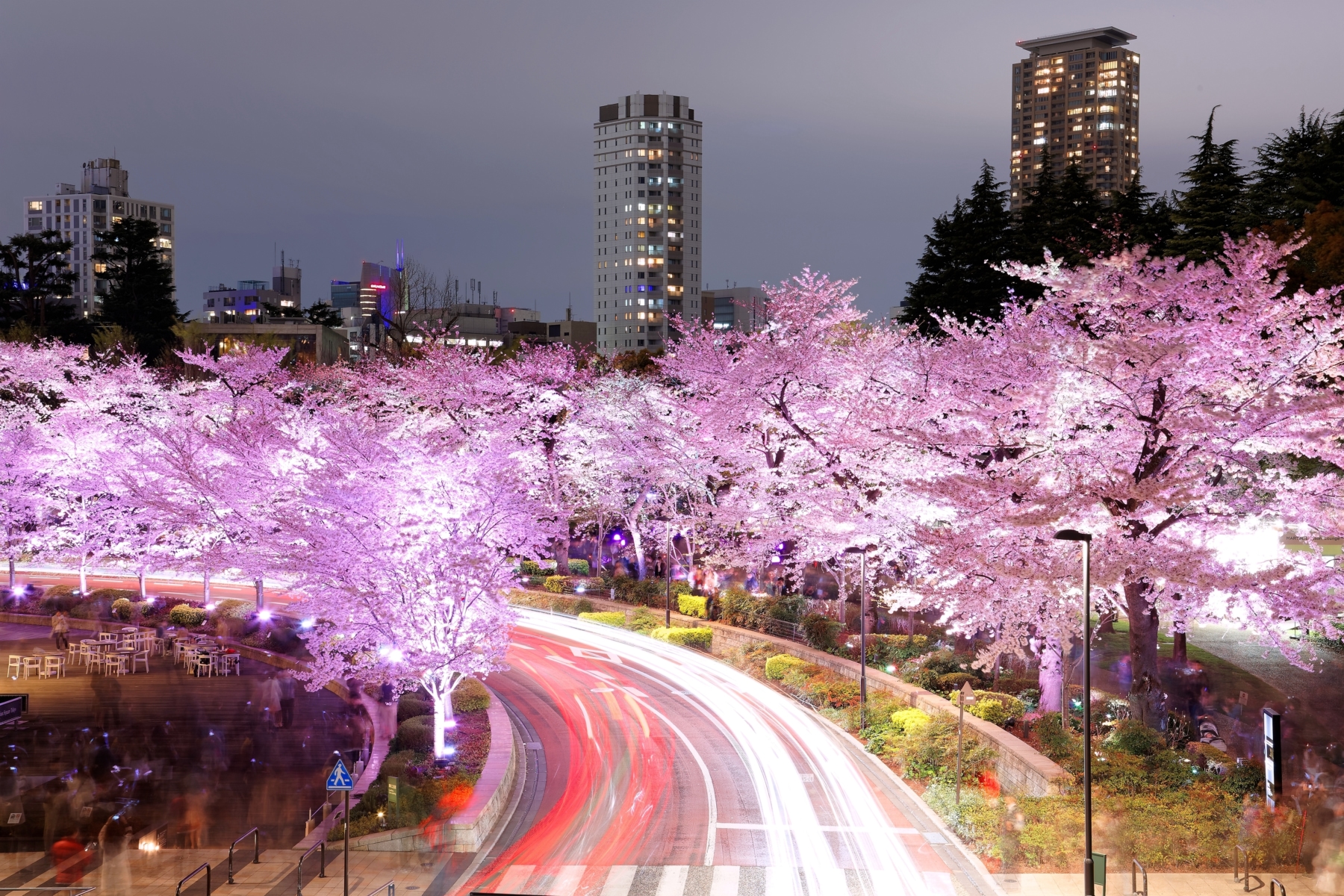
Roppongi Midtown
Roppongi Midtown may be one of the best date places for cherry blossom viewers. The romantic, soft violet lighting sets the mood after a dinner on one of the balcony restaurants in Midtown, overlooking the street of blossoms. The deep colors and complementing galleries and outdoor art venues bring another perspective to hanami. It’s rather quiet compared to more boisterous cherry blossom settings, which makes it all the more attractive. Tokyo Tower peeks through the branches, as a steady stream of taxis make their way slowly down the street underneath. Roppongi, usually notorious for the heavy partying, is waiting to be snatched up and experienced to its fullest extent during these more relaxed and serene moments.
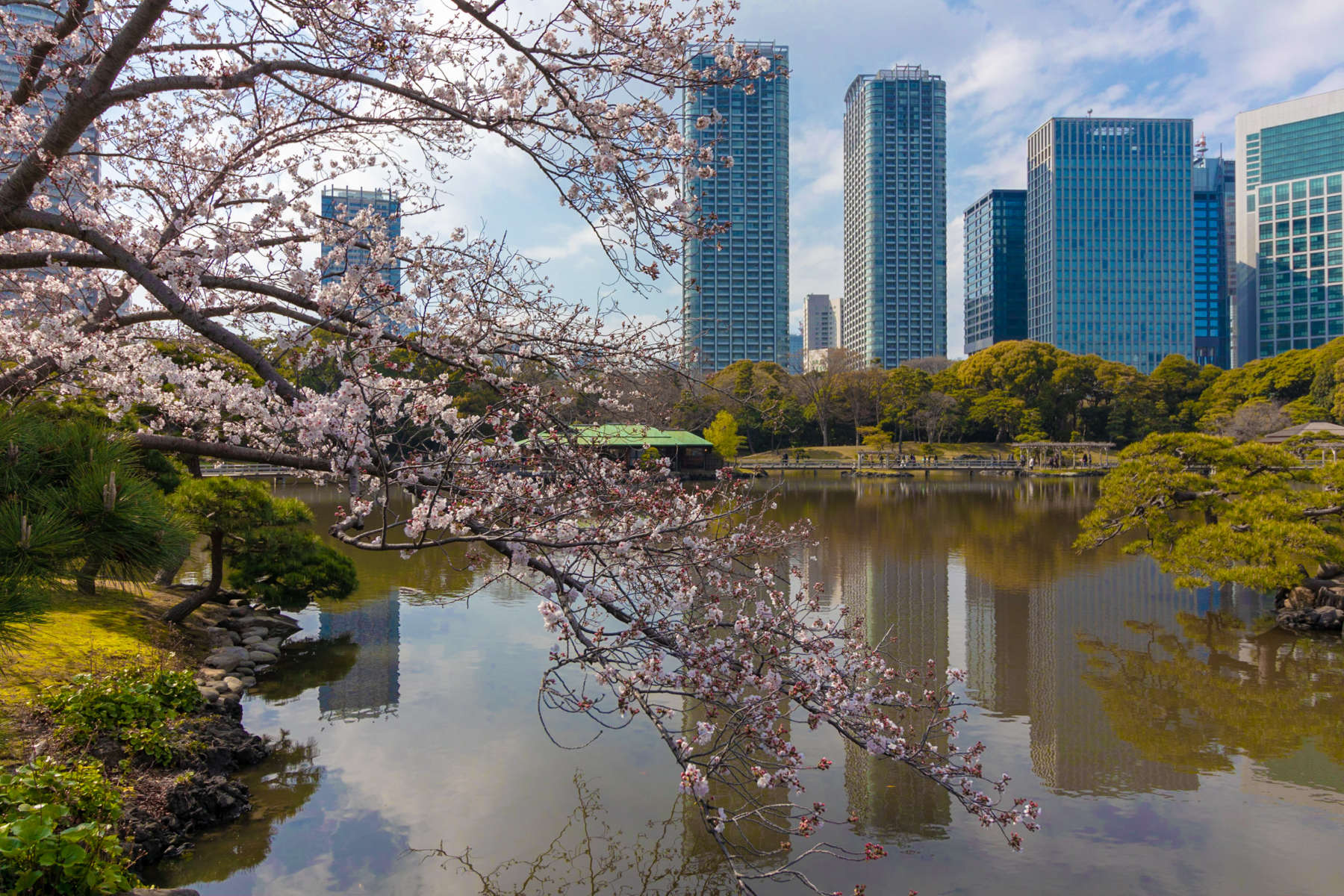
Hamarikyu Gardens
A characteristic of most of these parks is that they tend to be removed from downtown skyscrapers. An exception to this is Hamarikyu Gardens. Just a few minutes’ walk east of Shiodome Station, or south of Tsukiji-ichiba Station, it’s noticeably smaller than the other parks on this list, but has an impressive visual appeal. A moat wraps around the perimeter of the park, while some of the tallest and most elegant skyscrapers of the Tokyo skyline serve as a backdrop. Hamarikyu Gardens is a favorite of those who appreciate a slow stroll in a park. The Gardens offer rolling fields of canola and cosmos flowers, groves of both plum and cherry blossom trees, and—one of the main attractions—picturesque duck ponds. In the middle of the park is a decent restaurant with wide windows—a nice place for getting a bite to eat and gazing out at the blossoms. Wood bridges criss-cross over the ponds, as Tokyo Tower overlooks from afar.
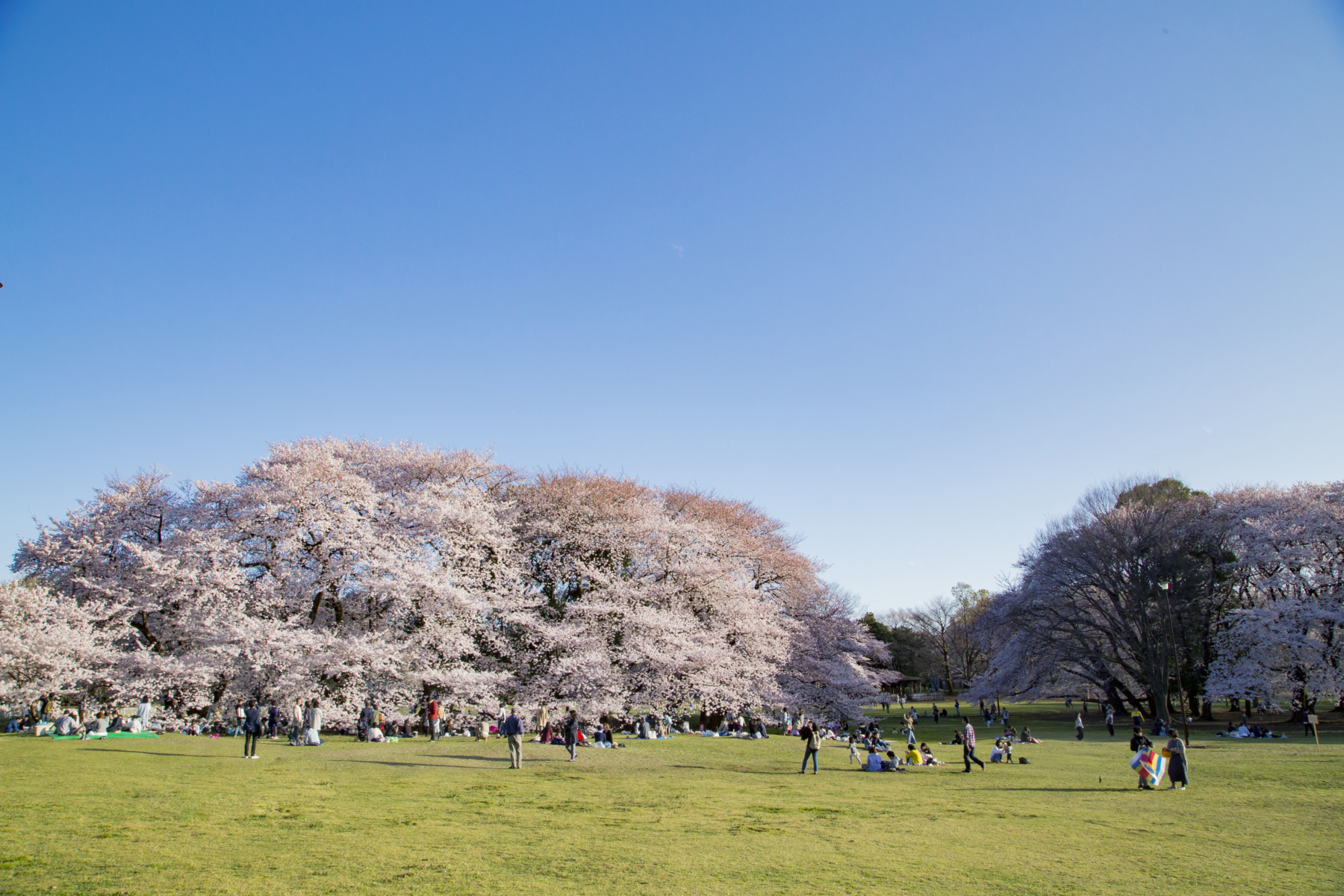
Kinuta Park
Deep in the heart of Setagaya Ward is Kinuta Park, situated beside the Setagaya Waste Disposal Plant (not the first place you’d think for a giant park to be). The expansive park is home to a number of sports fields, a bird sanctuary, the Setagaya Art Museum, and beautiful flower and fruit gardens. Pathways wind through forests, and small bridges shelter single musicians who light up the sunny weekend afternoons with their tunes. Surrounding one of the larger play fields is a ring of cherry blossom trees that listen to the “children’s [laughter] echoing in the wind”—a motto of the park. It’s not the easiest park to reach; the closest train station is Yoga on Den-en-toshi line, but you’ve got a twenty-minute walk from there. One option is to rent a bike and make a day of it.
A thorough description of the park and how to get there is available on the metro website.
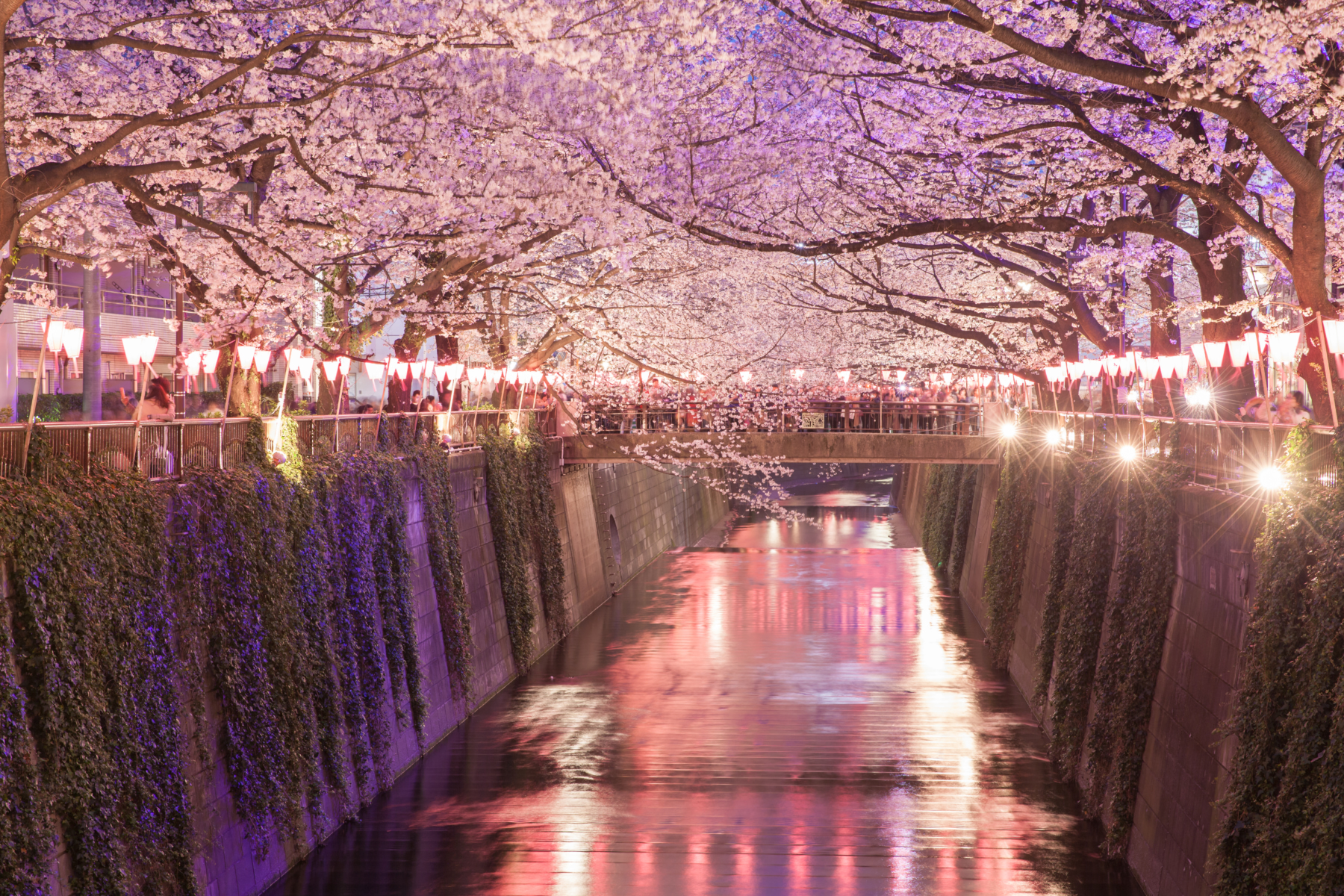
Nakameguro
Although undeniably lovely throughout the day, most visitors stroll down Nakameguro Canal after sundown, when illumination is in full bloom, synchronized with the blossoms. The low-lying branches drape proudly over the deep canal, with lanterns slung from either side of the canal, casting a reddish glow against the blue and pale yellow light from the streets. The area lacks places to sit, and it’s almost always crowded, but the high energy is contagious. Plenty of food booths and cafes and bars can be found nearby, all keeping the party going until the first train. This is perhaps one of the more sought-after destinations for photographers, who will be found scattered throughout the crowd, straining to get the perfect shot. Careful about lingering on the bridges, as patrols constantly keeps the crowds moving, while the crowd keeps the chu-hi drinks flowing.
Leave the Nakameguro Station out of the central exit, cross the main road in front, and then go straight another block directly to the canal, and be ready for a raucous and dazzling night in Nakameguro.
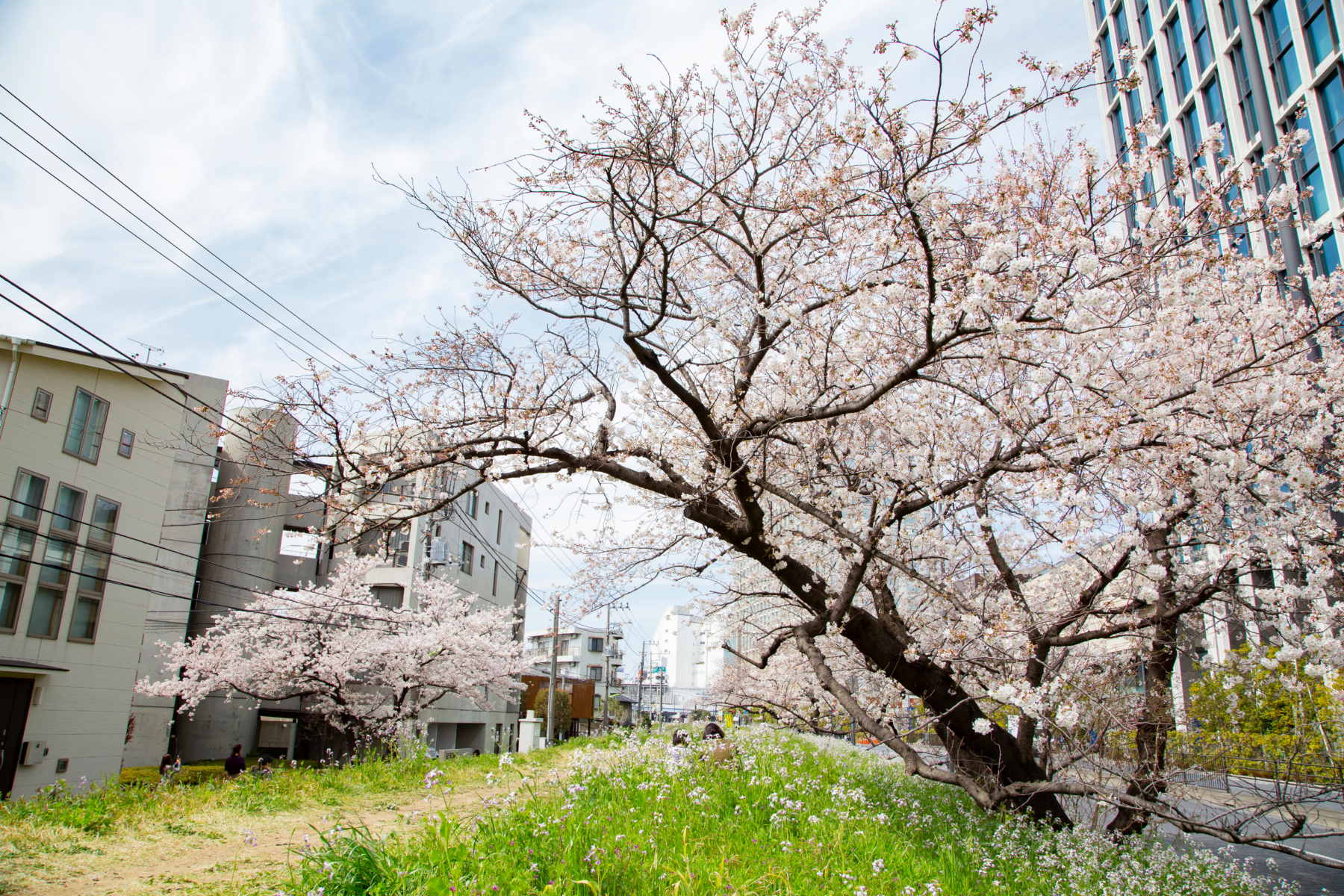
Seijo
The Seijo neighborhood of Setagaya is a quiet and muted, soft-pastel area that may often be overlooked or passed up for more glamorous districts of Tokyo. Poised along the Odakyu Line, it may not be the first place you think of for cherry blossoms, but the visit is more than worth it. Sengawa, a quaint canal that runs gently through the heart of the town, is lined with thick cherry blossom trees on either side. Petite bridges weave across the canal, allowing wanderers to meander at their leisure. The best part? If you head south down the canal, you’ll come across famed the famed Toho Studios, which distributed classic films by Akira Kurosawa and Yasujiro Ozu—though the most notable is arguably the 1954 cult hit Godzilla. In fact, guarding the entrance to the studios, standing comfortably beneath two sizable cherry blossom trees is a replica statue of the giant lizard. A mural of the Seven Samurai is just alongside the statue as well, completing the picturesque setting. With an endless collection of small cafes and izakayas to choose from, Seijo may be a perfect place to while away an afternoon with the right company.
Sengawa canal is a five-minute walk Southeast of Seijogakuenmae station.
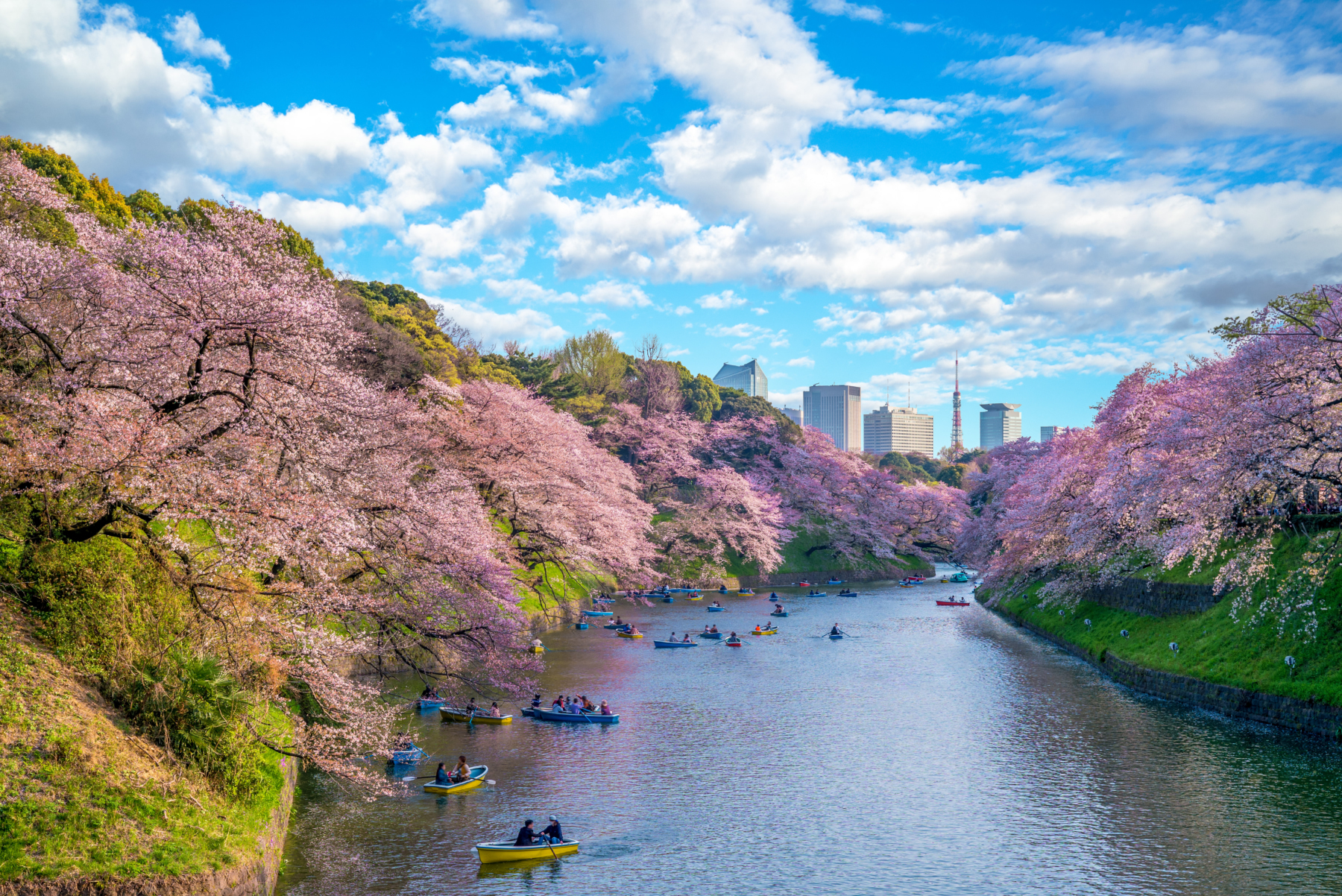
Chidori-ga-fuchi and the Imperial Gardens
A large, neat, smoothly sloping hill covered in a blanket of pink blossoms leads down into the moat that surrounds the Chidori-ga-fuchi Park at the Imperial Gardens. The river is wide and still, welcoming boaters with its glittering surface and romantic petals drifting in the wind. Make a day of the adventure and fill out an application to get a tour pass into the Imperial Grounds and Palace (http://sankan.kunaicho.go.jp/order/index_EN.html) before basking out in the sun along the river. Many other seasonal flowers festoon the gardens, making it a favorite place for tourists and returning visitors alike. Walk west from Tokyo Station a few minutes, and stop to look at the Niju-bashi Bridge that stands near the front gates to the Imperial Grounds. Runners often use the surrounding path as a part of their routine just for the view—and it’s easy to understand why.
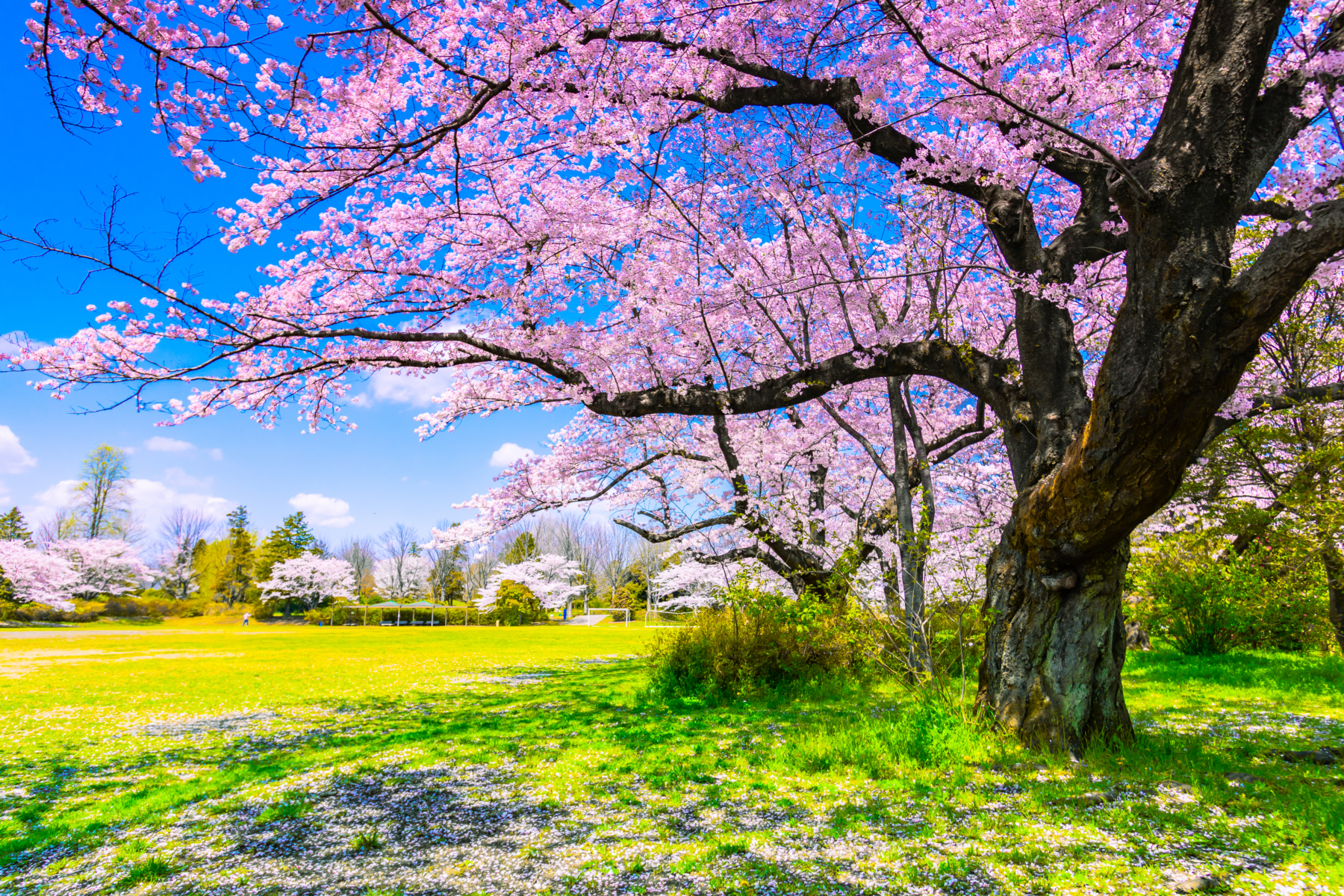
Ueno Park
Ueno Park features more than 800 trees growing across its broad expanse, which draws visitors foreign and domestic with its museums, temples, and shrines. An official “Sakura Matsuri” spans a week or two, depending on the length of the cherry blossom season that year, and provides even more entertainment than usual—live shows, food carts, parades, and other sightseeing experiences. Naturally, this is one of the more packed cherry blossom areas of Tokyo, so brace yourself for the throng. Especially popular for families on the weekends, there is something for everyone.
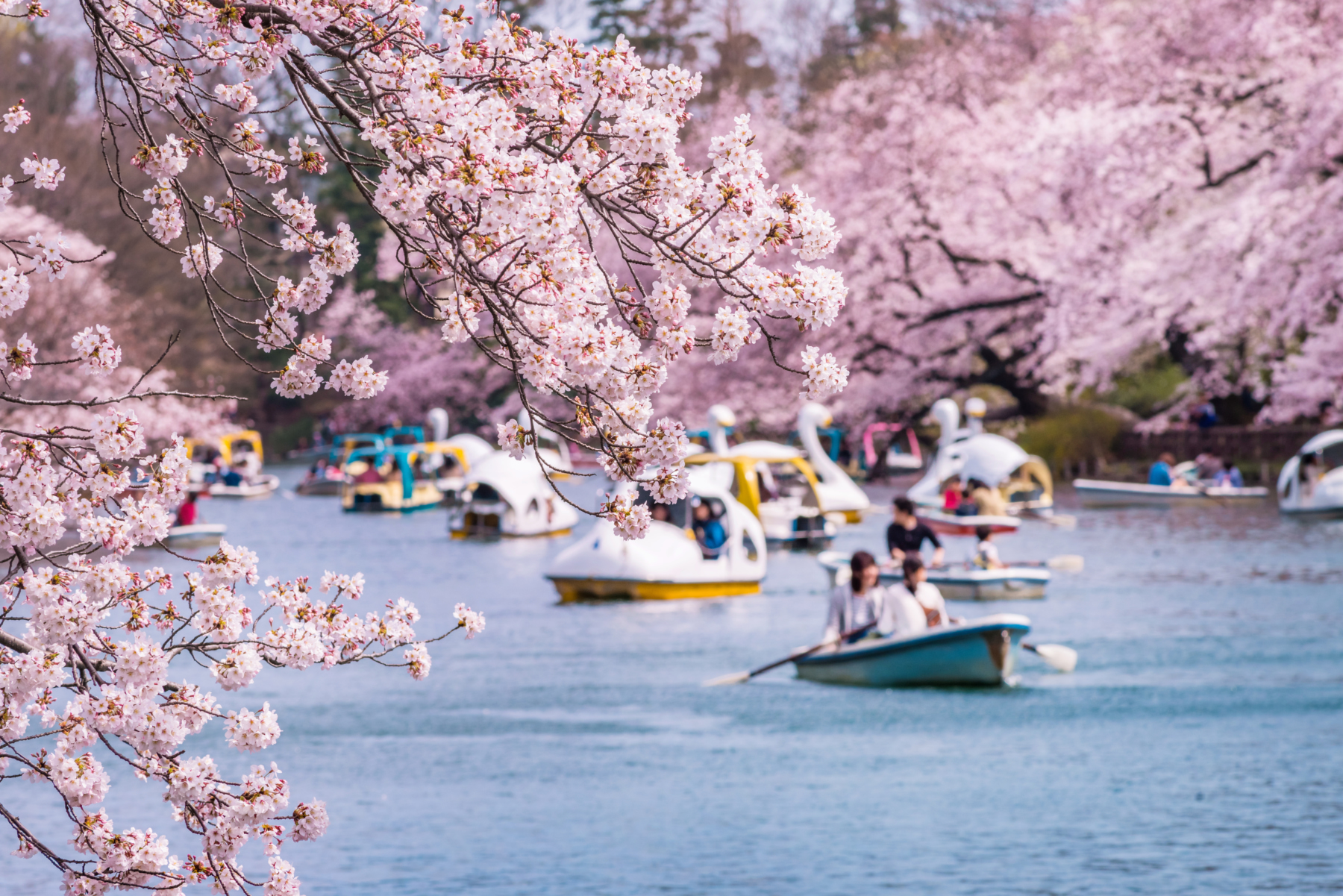
Inokashira Park
Inokashira Park in Mitaka is a stunning location for sky-high cherry blossom trees, which tower over picnic areas nestled along the riverbanks of Inokashira Pond. A dreamy place for a date, hanami party, or family outing, Inokashira Park has a great deal to offer visitors. A favorite, Ghibli Museum, is on the far southwest corner of the park, across the sports fields and play areas. Near the center of the park is a small zoo, with delightful, rustic restaurants on the slopes just around the pond, shrouded in bamboo. Rent small canoes or swan boats on the cheap in the afternoon, enjoy a dinner outside on a restaurant veranda during sunset, and stick around for after-hours illumination. The gorgeous scenery will keep you company for hours into the late night, but be careful not to miss your last train! The park is a short walk south from Kichijoji Station (where both Keio and JR Chuo lines cross through).
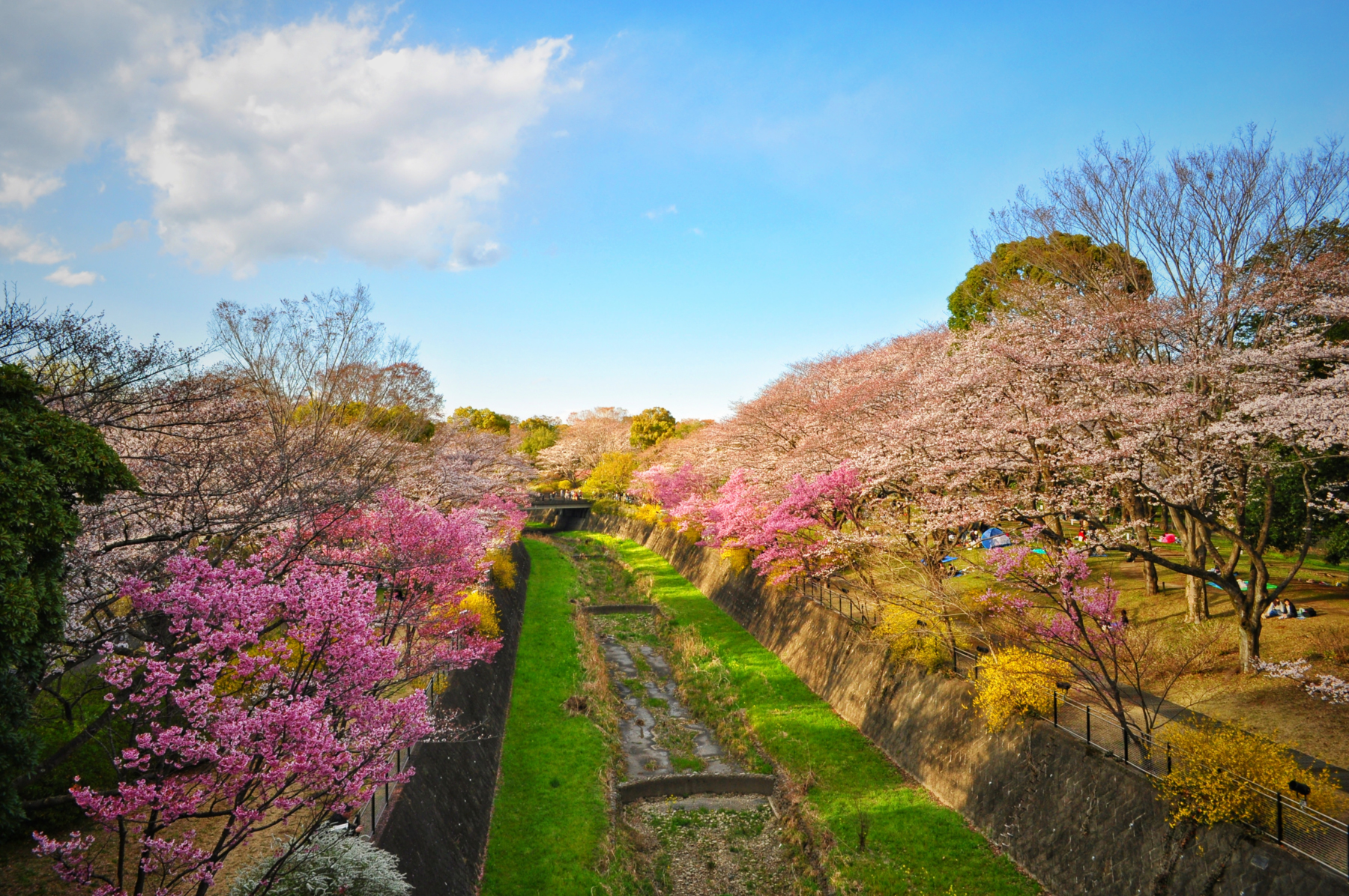
Showa Memorial Park
Although a bit removed from downtown Tokyo (30 minutes from Shinjuku by Chuo Rapid Express), Showa Memorial Park in Tachikawa is a remarkable park to revel in. An active park with a myriad of weekly events, there is plenty of adventure waiting to happen. The cherry blossom trees may be breathtaking, but the park is most certainly not limited to just having a great place to experience hanami.
Boasting the title of the largest park in the 23 wards of Tokyo—and one of the biggest in the nation—Showa Park offers a lot of ground to cover. Luckily, the government offers day-use bikes for a low fee, and 11 kilometers of bike trails. Barbecue areas, dozens of playground sets, an outdoor swimming area, fountains, various gardens and forests complement the cherry blossom environment. Kids can get their hands dirty and join in a hunt to identify and find different kinds of flowers and plants in the shade of the blossoms, and parents can join in a game of ultimate Frisbee or croquet. There is even a “Field of Dreams” baseball field for the sentimental. It’s a little far from Tachikawa station (almost 20 minutes on foot from the North Exit), so be ready for a little hike before the fun even begins.
Entrance is ¥490 for adults and free for kids under 15.
Check out more hanami guides from Tokyo Weekender:

